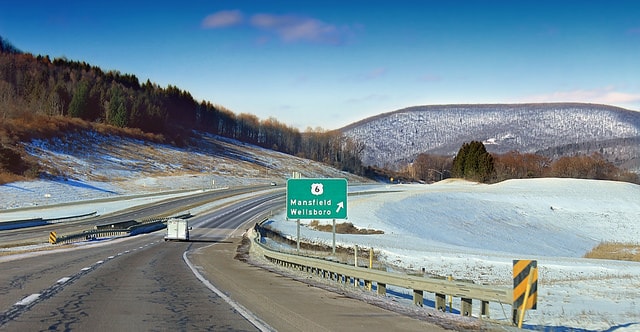Many of us place a lot of faith in our cars. It makes sense to do so because a car is most people’s second biggest purchase of their lives. We rely on our cars to get to work, the grocery store, to attend church, to go to school, to haul necessities, and to go on trips. To do these things, our cars need solid tyres; tyres are the only part of a car that meets the road. Therefore, we don’t want to place too much faith in potentially not-so-solid tyres this winter.
Low tread
This a common, and admittedly an obvious, reason to replace your tyres. Low tread means that your tyres aren’t gripping the road efficiently enough. In wintry conditions, the last thing you want is bald tyres; even with good brakes, it can be near impossible to bring your car to an immediate stop if needed. Add snow on top of that, you have a real recipe for disaster.
A good way to evaluate the tread of your tyres is to use the “penny test.” As you probably guessed, the only tool you’ll need for the test is a penny. If your tread at least reaches good ole Lincoln’s head, you’re good to go! Alternatively, you can bring your car to a mechanic or we buy damaged cars, so you can trust the assessment of the depth of your tyre tread; there’s no harm in getting a professional opinion.
Dry rot

Dry rot is a quiet tyre killer that doesn’t get as much as attention as other adverse tyre conditions. Dry rot is typically an age factor; it happens when the tyre has grown old and loses its elasticity. With all the new technology put into tyre designing, nowadays you’ll often find that you’ll need to replace your tyres simply because they have reached “retirement” versus having low tread.
In bad cases of dry rot, the sidewall and face of the tyre will begin to develop cracks as well. It’s good advice not to drive (or buy!) on tyres that show obvious signs of dry rot. If you drive on severely rotted tyres, you leave yourself open to mishaps such as uncontrollable skidding or an inability to sufficiently brake in time.
Compromised sidewall
Do not drive your car if any of its tyres have damaged or defective sidewalls! A compromised sidewall can easily result in a complete tyre blowout when driving normally. For this reason, it is strongly recommended to replace tyres with damaged sidewalls as quickly as possible. If your car needs new tyres because of a damaged sidewall, you can find plenty of cheap tyres at TyrePlus.
Typically, sidewall damage is easy to see on a tyre when the car is parked. The only time where you might have difficulty seeing the damage is when its on the sidewall facing the car’s wheel well. Often times, with sidewall damage such as a substantial tear or hole, you will find that the tyre refuses to hold air. It’s useful to consider having a trusted mechanic thoroughly inspect your tyres to find any sidewall damage or defects.
It’s no secret that if you had to choose the most important component on your car, it should be the tyres. Good tyres will help your car do its job safely – especially in the winter – and your car will thank you for not letting it go around with worn out and potentially damaged feet! As an additional tip on top of everything above, make sure to consistently check the air pressure in your tyres. Have faith but don’t unnecessarily leave things up to chance!
